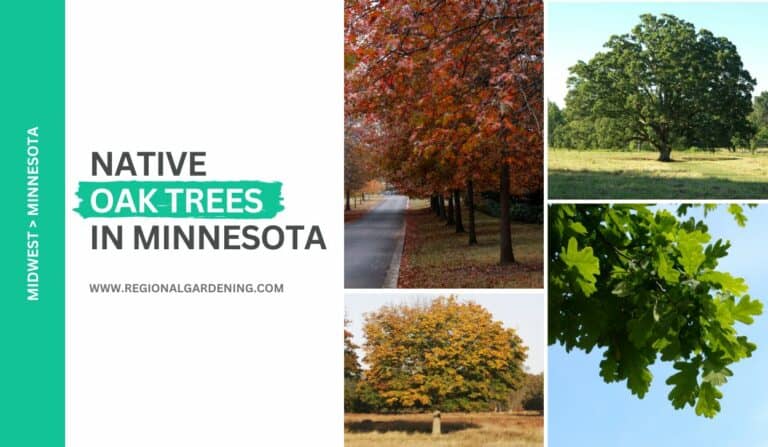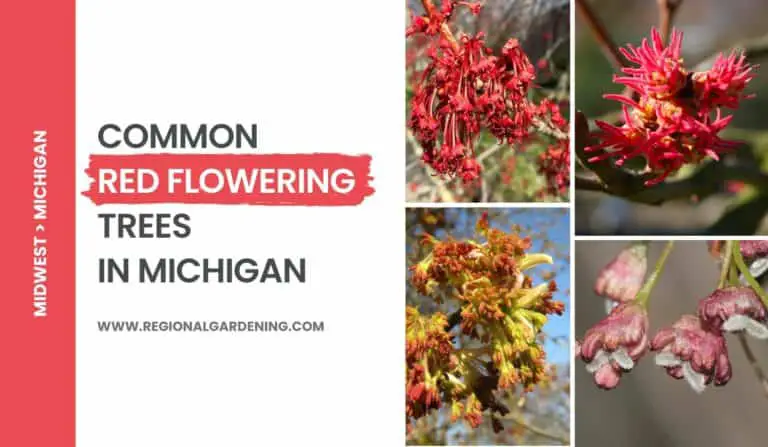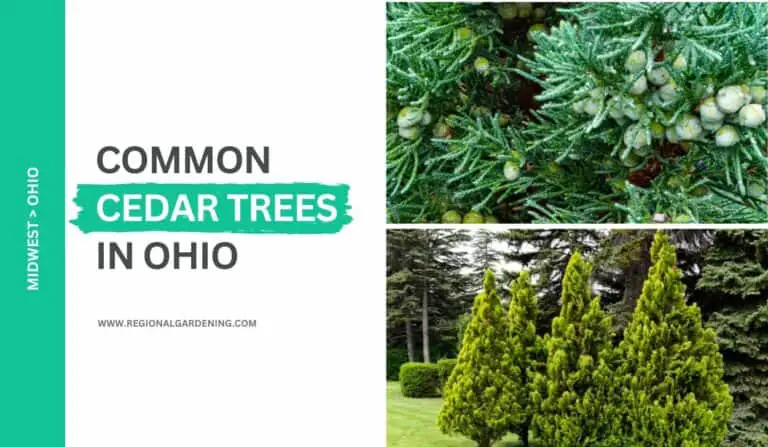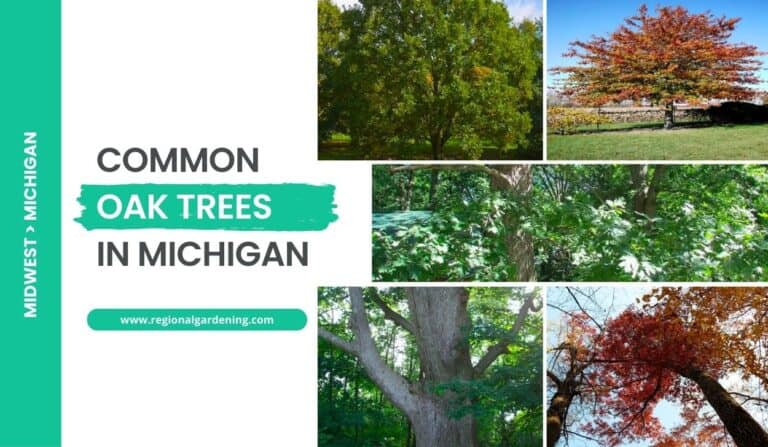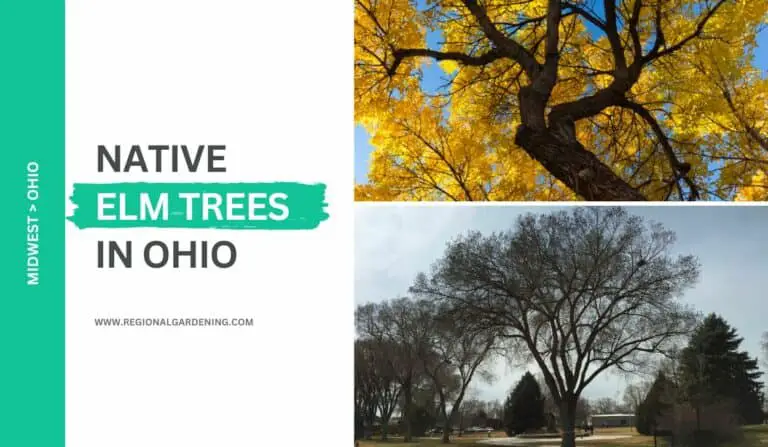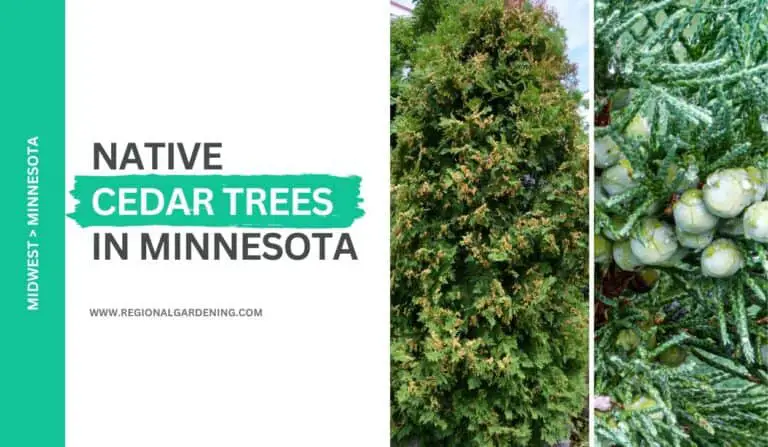2 Native Hickory Trees In Wisconsin (Photos & Identification)
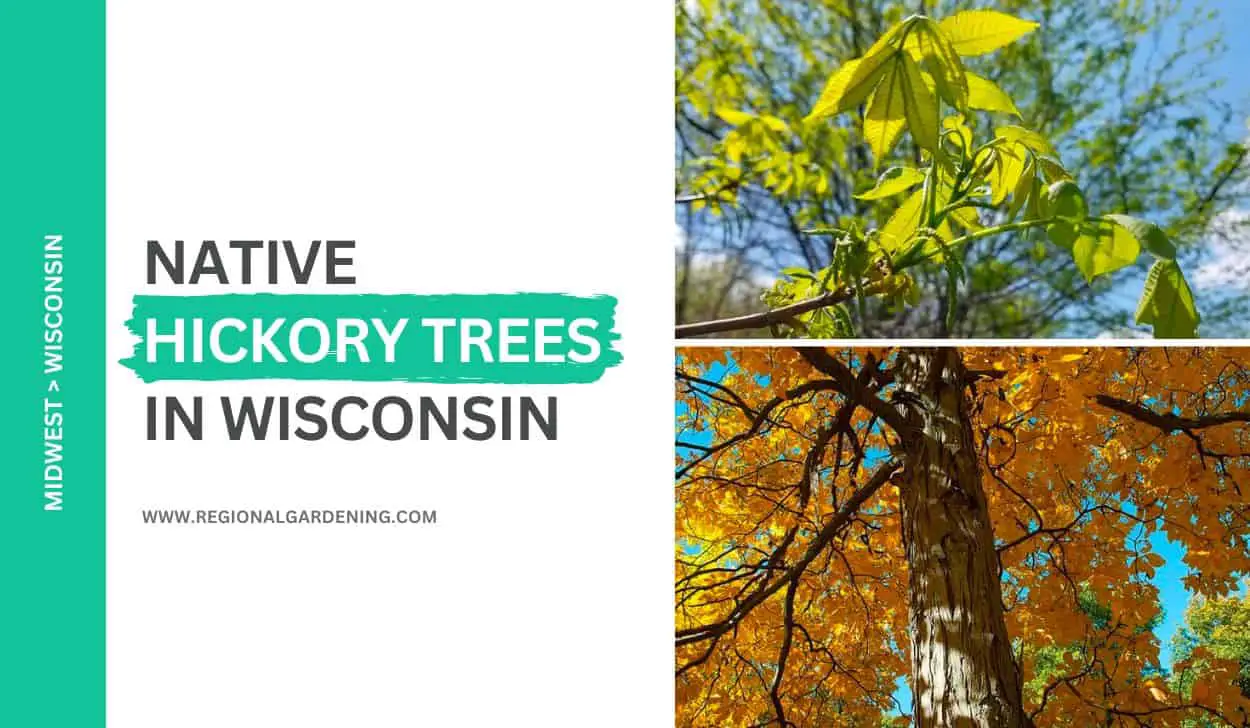
Despite being small in number, it’s hard to overlook the majestic presence of hickory trees, standing tall and reaching toward the sky in Wisconsin forests. However, these magnificent trees go beyond their visual appeal and play a crucial role in Wisconsin’s natural environment by providing food, shelter, and shade to a diverse array of plant and animal species.
In this article, we will explore the two most commonly found native hickory trees in Wisconsin, uncovering their distinctive features that make identification a breeze. We also touch upon their uses, native habits, and ranges for a better understanding.
So, let’s get started.
1. Bitternut Hickory
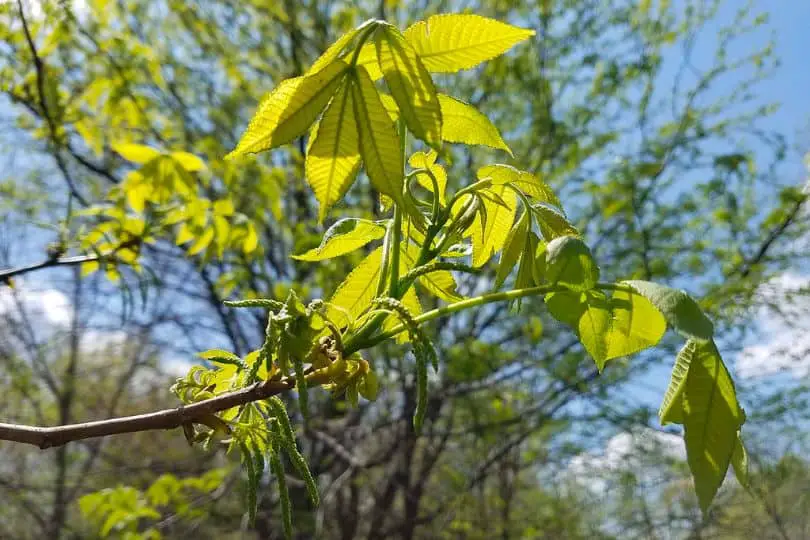
- Common Name: Bitternut Hickory
- Scientific Name: Carya cordiformis
- Mature Height: 50 to 75 feet
- Native/Non-Native: Native
- Flowers/Cones: Nuts with thin husk
Bitternut Hickory, also known as Carya cordiformis, is a huge tree that may grow up to 75 feet tall and 1 to 2 inches in diameter. Its crown is open at the top and rounded, making it a lovely accent to any landscape.
Bitternut Hickory bark is granite gray with a yellow tint and is split into thin, plate-like scales. It’s not as tough as most hickories, and the bark doesn’t peel as easily as shagbark hickory. Its winter buds are compact, scurfy, and bright yellow, growing to a length of 1/2 inch or more.
Bitternut Hickory leaves are alternating, complex, and grow to reach 6 to 10 inches long. Each leaf has 7 to 9 leaflets that are 4-6 inches long and have serrated margins. Bitternut Hickory leaflets are substantially smaller and thinner than those of other hickories.
This tree produces nuts with a thin husk in the fall. The nut is normally thin-shelled, smooth, and brittle, with a length of around 1 inch. The nut is wider than it is long, and it has a bitter kernel.
Bitternut Hickory is endemic to much of the eastern United States and is most commonly found on well-drained, fertile soils in the state’s southern half, reaching north to Langlade, Rusk, and Polk counties.
Bitternut Hickory wood is hard, robust, hefty, and reddish-brown. It is used to make hoops, fuel, and farm equipment. However, the wood is considered to be of lower quality when compared to shagbark hickory.
2. Shagbark Hickory
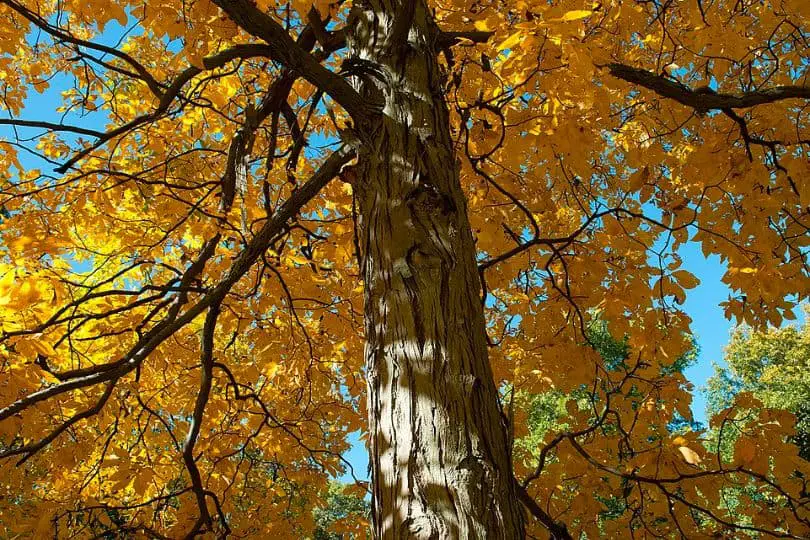
- Common Name: Shagbark Hickory
- Scientific Name: Carya ovata
- Mature Height: 60 to 100 feet
- Native/Non-Native: Native
- Flowers/Cones: Nuts
- Uses: Wood, Fuel, Wildlife Food, Smoking Meats
Shagbark Hickory is a majestic tree that can reach heights of 60 to 100 feet.
Its bark is distinctive, rough, and shaggy. The light gray bark splits into thick, vertical bands that are only loosely connected to the tree. It has huge, hairy, egg-shaped winter buds.
The leaves of the tree are alternating, complex, and can grow to be 8 to 15 inches long. These leaves are made up of 5 oval leaflets, the last of which is bigger than the rest. The leaflet’s edge is coated with fine teeth and many hairs.
The fruit of the tree is a spherical nut that can grow singly or in pairs. It is encased in a thick, deeply grooved husk at the seams. This husk breaks into four pieces. The nuts are light brown and flattened, with a thin shell and a delicious kernel.
Shagbark Hickory is native to the southern United States, where it grows on moist, rich soils and well-drained hillsides. Its heartwood is light brown, with virtually white sapwood. It is heavy, hard, durable, and extremely strong, making it ideal for producing agricultural implements and tool handles.
It is also an excellent fuel source and the best wood for smoking meats. The nut is an important source of food for wildlife.
Native Hickory Trees In Wisconsin – Frequently Asked Questions (FAQs)
Let’s go through some of the most searched questions on the internet related to common and native hickory trees in Wisconsin. These questions were taken from the beginner gardening forums and tree enthusiast groups.
Are there hickory trees in Wisconsin?
Although not as common as in the southern states, hickory trees do exist in Wisconsin. The two native hickory trees in Wisconsin are bitternut hickory and shagbark hickory. These trees can be found throughout the state, but are most common in the south and southwest. These trees can be found in a variety of habitats, including forests, woodlands, and river valleys.
Are hickory nuts edible?
Although not all varieties are edible, the vast majority of hickory nuts are. Hickory nuts, the fruit produced by hickory trees, are well-known for their distinct and rich flavor. When the nuts are fully mature, they are frequently harvested in the autumn.
Hickory nuts can be eaten raw or roasted, and they are used in a variety of culinary applications such as baking, cooking, and snacking. They are highly valued for their nutritional value, as they contain healthy fats, protein, and dietary fiber. However, because hickory nuts have thick shells, cracking and extracting the nut meat from them can be difficult. Because of their difficulty in extraction, they are quite expensive as well.
Where can you see the most hickory trees in Wisconsin?
Hickory trees can be found throughout Wisconsin, but they are most commonly found in the state’s southern and southwestern regions. These areas, which include forests, woodlands, and river valleys, provide suitable habitats for hickory trees to thrive.
Exploring nature reserves, state parks, and protected areas in Wisconsin’s southern and southwestern regions would be a good place to start if you want to see a significant number of hickory trees. Kettle Moraine State Forest, Governor Dodge State Park, and Black River State Forest are a few examples.
What are the uses of hickory trees in Wisconsin?
Hickory trees in Wisconsin perform a variety of utilitarian and culturally significant functions. Hickory is a robust and durable wood that is highly sought after for its outstanding timber properties and lovely grain patterns. It is used in the manufacture of sporting equipment including baseball bats and golf clubs, as well as furniture, cabinets, flooring, and tool handles.
Hickory wood is also prized as a source of firewood, providing warmth and fuel to houses. Furthermore, these trees have cultural significance since indigenous groups have long used them to make tools, baskets, and other objects.
Similar Articles
- Native Aspen Trees In Wisconsin
- Native Ash Trees In Wisconsin
- Native Oak Trees In Wisconsin
- Native Pine Trees In Wisconsin
- Native Spruce Trees In Wisconsin
- Native Cedar Trees In Wisconsin
- Native Birch Trees In Wisconsin
- Native Maple Trees In Wisconsin
- Native Elm Trees In Wisconsin
- Native Locust Trees In Wisconsin
- Native Nut Trees In Wisconsin
- Native Cherry Trees In Wisconsin
Sources
The Regional Gardening team makes sure that the information in our articles is accurate by only using sources that are known to be trustworthy. Some of these sources are peer-reviewed journals from government agencies, well-known universities, and scientific research organizations.
- Trees Of Ohio, Division Of Wildlife
- Trees Of Ohio Field Guide, Book by Stan Tekiela
- Ohio Trees, OSU Extension Publications
- Native Plant Lists, Ohio Department Of Natural Resources
- Ohio Department Of Agriculture
- Gardening, The Ohio State University


